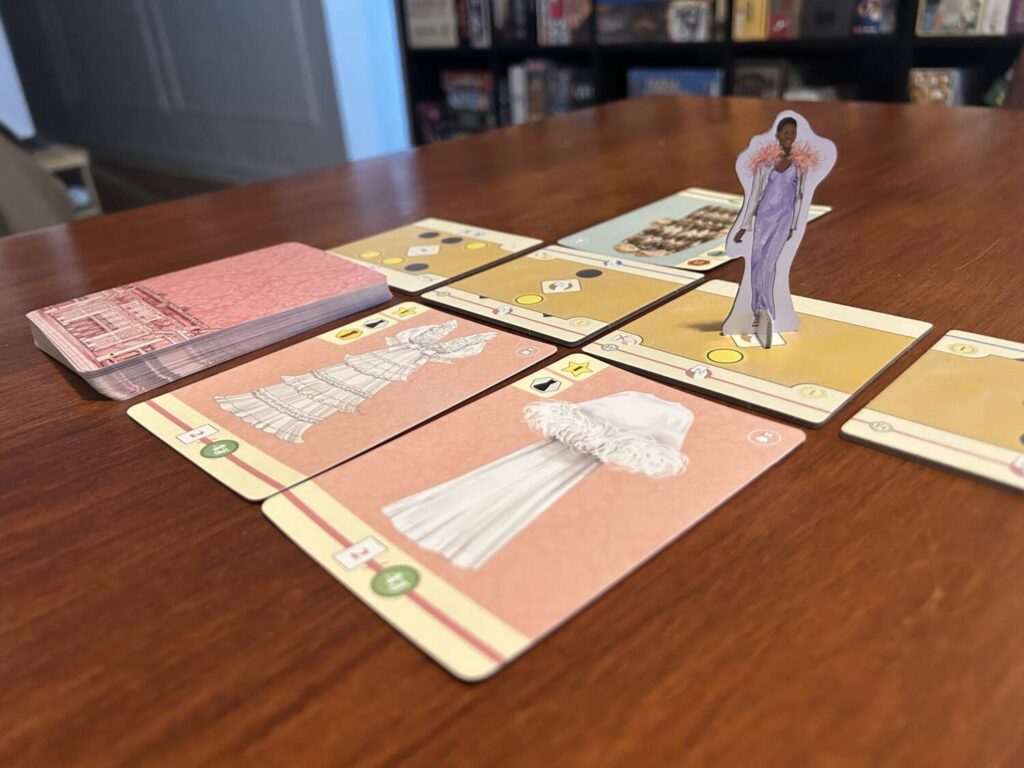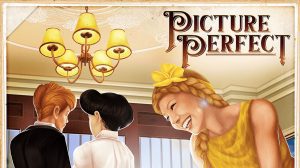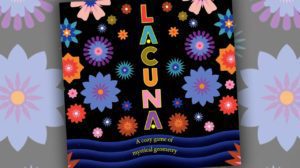There’s something Trojan about The Battle of Versailles. Let’s pretend that you are no more familiar with the Battle of Versailles than I was before learning about this game, and you have to guess, sight unseen, what the game is about. From the title, you’re thinking military conflict, right? Probably something from the French Revolution, or a lesser battle of WWII? But you want more information before you guess.
I tell you that The Battle of Versailles is a Card Driven Game, a CDG, the type of game associated with beefy GMT titles like Twilight Struggle and Empire of the Sun. I describe it as an incredibly tense, mean two-player game in which both participants pursue unique paths to victory. One side, the French, represents an entrenched old guard, an immovable object. The other side, the Americans, represent an unstoppable force, storming the barracks and calling for revolution.
“Wait,” you say. “The French and the Americans? They only fought during the French Indian War… Is there a Versailles in the Northeast United States?” There is not. Still, nothing else makes sense. You slam that button. “It’s a war game,” you shout, scaring small children nearby. I pull the box out from behind my back, where it has evidently been this entire time. The cover is baby blue and baby pink. You recognize, amongst the drawn figures, Oscar de la Renta and Yves Saint Laurent. You realize that you couldn’t have been more wrong.
Au contraire. You described it as a war game, and you were exactly right.

In fact, if I’m not mistaken, in old French, the word “versailles” means something like, “terrain where the weeds have been pulled.”
The Battle of Versailles was a fashion show, hosted at the French palace in 1973. The event was a fundraiser to restore Napoleon’s summer getaway, which had fallen into disrepair. It pitted five now-iconic American designers against five iconique French legends, to see if the New Fashion could stand up against the Old(e). In classic European style, the French put on a 2.5 hour display of ostentation. The Americans threw together just over 35 minutes of aggressive, daring work, and burned the house down.
Not literally, obviously. That would have defied the point.
The Battle of Versailles captures all of this in a whip-smart, 30-minute card game. As the models work their way down the runway, each side has to leverage events, outfits, and celebrities to their advantage. The French player has five actions per round, while the American has three. During each action phase, the player with advantage decides who goes first. They then play one card from their hand, using it for its printed effect, to draw cards, or to donate more money to the restoration of Versailles, which leads to end-of-round bonuses.

The events modify the game state, allowing you to discard cards, move outfits, and so on. The outfits work as a sort of set collection, as you try to coordinate icons on your active cards with whichever of your designers is featured in the current round. The celebrities provide you with effects, and enough star power out on the board can win you the game. Just about everything contributes to Prestige. If either player accumulates 15 Prestige, they win. The French can also win by restoring enough of Versailles to build up national pride, and the Americans can snag a victory by having a diverse set of designs out on the runway.
Not only do you fight over celebrities and clothing, you fight over the runway itself. The runway is The Battle of Versailles’s most inspired design choice. Each round consists of nine parts, represented by tiles on the runway. The model standee works her way from one end to the other, activating each space as she goes. The tiles can be flipped, giving small advantages to either player. Let your opponent get too many of those, though, and they snowball into something unstoppable. The tiles can even be rearranged. Actions can be doubled, or skipped, or triggered before your opponent has time to prepare. This all contributes to a decision space where you feel like you’re trying to put out a dozen fires, while simultaneously trying to start a dozen of your own.
The action discrepancy I mentioned, the Americans’ three actions to France’s five, isn’t the disadvantage it seems. In fact, experience tells me that the Americans are slightly easier to play. Their cards are flashier, and worth more Prestige. The French win through patience and calculation. The Americans win by seizing victory.
When I say the Americans are easier to play, I don’t mean that the game feels unbalanced. It doesn’t, and I don’t think it is. The French require a more refined approach—apt—and while both sides reward familiarity with the game over time, the French necessitate it.

You Better Work
The Battle of Versailles oozes love for its subject matter. One of the better details in this game full of excellent details is the decision to make the model standee Black. The American models included 10 African Americans, an unprecedented number for the time.
More significant than their quantity was their attitude. Fashion shows in Europe prior to November of 1973 had always been stuffy affairs. Think of Phantom Thread. Demure movements, an attempt to disappear behind the garment. The polite everywoman. The Black American models, like the designers themselves, brought flash and pizzazz. The modeling landscape changed overnight. European designers suddenly lost their minds for Black American women to represent their work on the runway.
The Battle of Versailles is mean, it is clever, it is relentless, and it is an absolute blast. More than that, it doesn’t wear its subject as window-dressing. Designers Eloi Pujadas and Ferran Renalias did the work. First-time artist Malen Company (fantastic name) renders everything with humor and nuance. You feel the egos. You see the flashbulbs. You hear the roar of the crowd.
The Battle of Versailles is a masterpiece.
![]()










I suddenly have a fierce desire to work in high fashion!